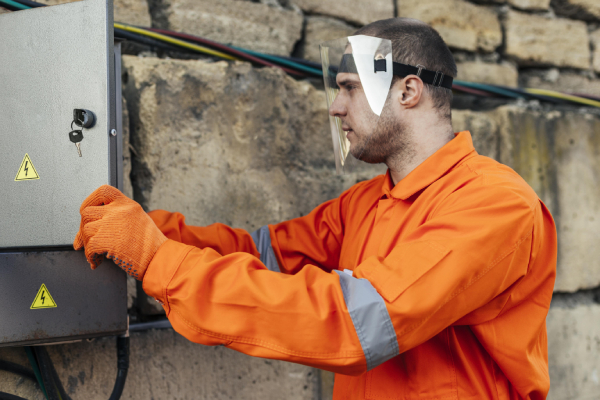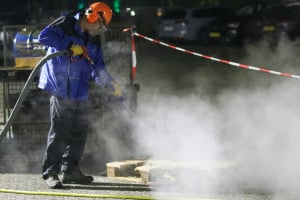
The importance of flame-retardant clothing in industries
As part of their mission, many workers are exposed to fire risks or sources of intense heat on a daily basis. For their safety, it is crucial that these professionals are adequately equipped with protective clothing. The importance of flame-retardant clothing in industries should therefore not be underestimated. These specific outfits, designed from flame-resistant fabrics, help limit the risk of serious burns in the event of exposure to flames. It is therefore essential that companies equip their employees with these work clothes to ensure their safety.
Summary
- The different standards governing flame-retardant clothing
- Materials used to make flame-retardant clothing
- The importance of choosing protective clothing based on risks
- The benefits of flame-retardant clothing for workers and businesses
- Diversity of flame-retardant protective clothing and their lifespan
- Care of flame-retardant clothing
- Conclusion
The different standards governing flame-retardant clothing
Protective clothing against fire risks is subject to different standards. These aim to guarantee their effectiveness in the event of exposure to flames. It is therefore important to know them well to make the best choice of work clothing.
The ISO 14116 standard, for example, requires that protective clothing be made of non-flammable materials, or at least of fabrics that stop burning once the heat source is removed. She assures that the clothing in question will not contribute to spreading the flame.
The ISO 11612 standard, for its part, relates to protective clothing against heat and flames. It specifies the minimum performance that protective clothing must have to be effective.
These standards are guarantees for workers. They ensure that protective clothing meets very specific safety criteria.
Materials used to make flame-retardant clothing
The manufacturing of fireproof clothing leaves nothing to chance. The materials used are selected for their ability to resist heat and flames.
Flame-retardant cotton is one of the most commonly used fabrics. Treated with flame retardants, cotton fibers become flame resistant. This helps delay the ignition of the garment in the event of exposure to a heat source.
There is also protective clothing made from aramid fabrics or modacrylic fibers. These materials, with high flame resistance, offer superior protection. They are generally used to make clothing intended for workers most exposed to fire risks.
The importance of choosing protective clothing based on risk
Choosing the right protective clothing is crucial. This choice must be made based on the risks to which the worker is exposed.
When the risk of exposure to flame is low, treated cotton work clothing may be sufficient. In the case of welding work, for example, clothing made of leather or similar materials may be necessary to effectively protect the worker.
In situations where exposure to heat is greater, it is preferable to opt for protective clothing made from aramid or modacrylic fibers. These offer better protection against heat and flames.
The benefits of flame-retardant clothing for workers and businesses
Wearing flame-retardant clothing has many advantages, both for workers and for businesses.
For workers, these clothes are insurance. They help reduce the risks in the event of exposure to intense heat sources. They also promote well-being and confidence at work, knowing they are protected.
For businesses, investing in flame-retardant protective clothing is proof of their commitment to the safety of their employees. Beyond the regulatory aspect, this can help improve the reputation of the company. In addition, by reducing the risk of workplace accidents, these clothes also help reduce the costs associated with sick leave and compensation.
The importance of flame-retardant clothing in industries is therefore undeniable. Whether in terms of safety, confidence or brand image, this protective clothing offers many benefits.
Diversity of flame-retardant protective clothing and their lifespan
There is a wide variety of flame-retardant protective clothing. This diversity makes it possible to adapt the equipment according to the nature of the work carried out and the associated risks. It is possible to find jackets, pants, coveralls, hoods, gloves and even safety shoes< /a> having fire-retardant properties.
These workwear are designed to withstand varying levels of heat and flame. Some are specifically intended for protection against electric arcs, others are suitable for working with molten metals. The choice of equipment must therefore be made according to the specific needs of the worker.
Another aspect to consider is the lifespan of flame-retardant clothing. Indeed, although these garments are designed to resist heat and flames, their effectiveness can degrade over time and use. It is therefore crucial to regularly check their condition and replace them when their effectiveness is no longer guaranteed. It should be noted that the lifespan of flame-retardant work clothing is generally indicated by the manufacturer.
Caring for flame-retardant clothing
The maintenance of flame-retardant protective clothing is a crucial step in maintaining its flame-retardant properties. In fact, residues of chemicals, grease or dirt can reduce their effectiveness.
It is best to follow the manufacturer's instructions regarding cleaning and care of these work clothes. Some flame-retardant fabrics may require dry cleaning, while others can be machine washed. It is also important to regularly check the condition of clothing to detect possible signs of wear or damage.
In addition, when washing, you should avoid the use of bleaching products or softeners, as they can alter the flame-retardant properties of the garment. It is recommended to use mild detergents and dry clothes on low heat.
Conclusion
The importance of flame-retardant clothing in industry cannot be underestimated. This protective clothing is essential to ensure the safety of workers exposed to heat and flame. The choice of clothing must be made according to the specific risks of each job and respect the ISO standards in force. The materials used in their manufacture, such as flame-retardant cotton, aramid or modacrylic fibers, offer effective protection against radiant heat and flames.
Moreover, regular and correct maintenance of these garments is crucial to maintain their flame-retardant properties. Finally, it is important to understand that these clothes are not eternal and that their lifespan must be respected to guarantee optimal protection.
In an industrial world where safety is paramount, flame-retardant clothing plays a key role in minimizing risks and protecting the lives of workers.






